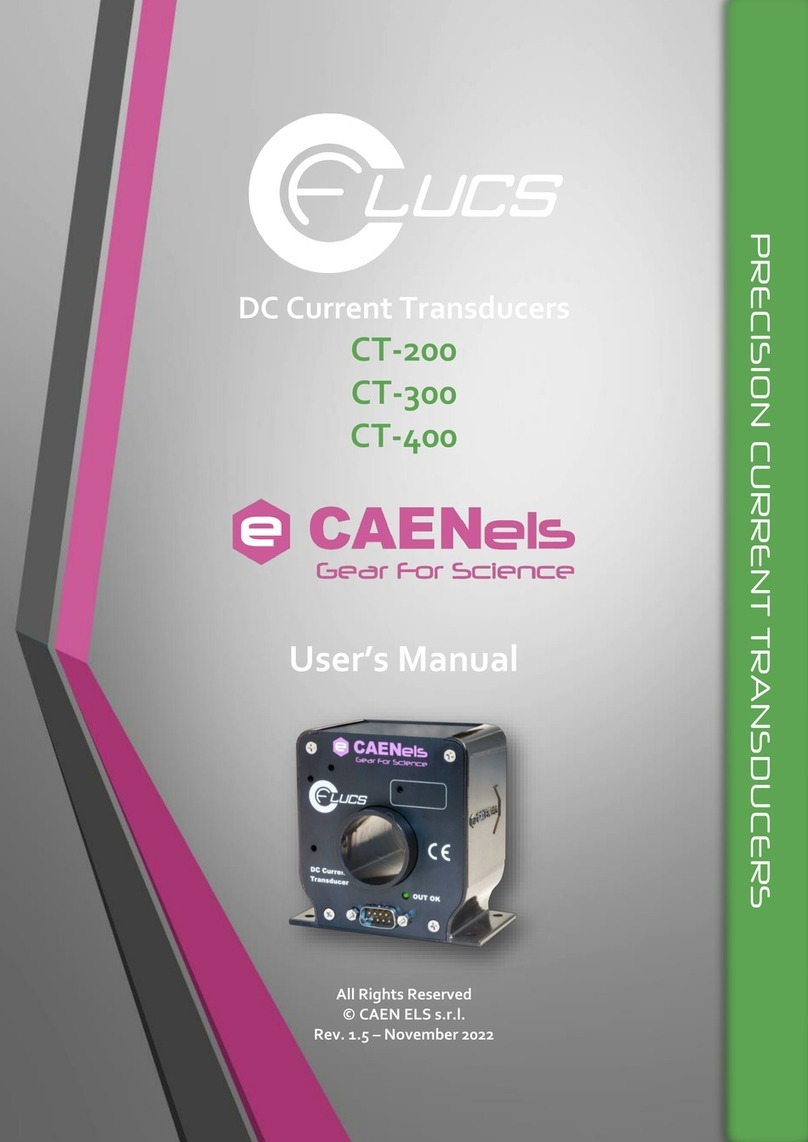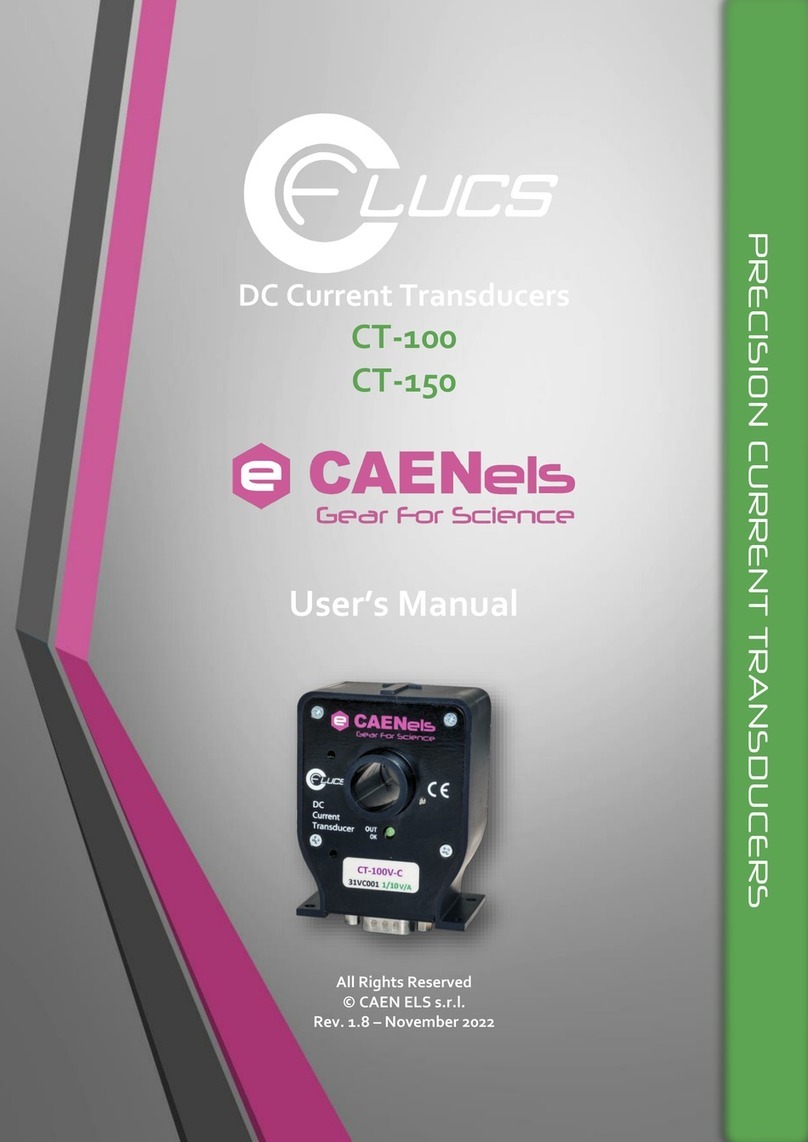Introduction CT PCB Series User’s Manual
8
1.Introduction
This chapter describes the general characteristics and main features of the DC
current transducers of the CT PCB mount series.
1.1 CT PCB Series Overview
The O-FLUCS < (O-FLUx Current Sensor) is based on a closed loop
technology that allows accurate and precise monitoring of DC and AC currents with
high bandwidth.
The metal casing guarantees higher noise immunity and reduces undesired noise
pick-up from external sources. The transducers CT-13 and CT-26 are PCB-mount
devices rated at maximum currents of 13A, 26A and 52A with primary to secondary
transformation ratio of 1:250, 1:500 and 1:1000 respectively. Galvanic isolation
between the primary and the secondary circuits allows to measure currents at a different
potential and simplifies interfacing if using the < as the feedback element of current
regulated power supplies.
Output from the < sensors can be chosen between two different versions:
standard secondary current output or buffered voltage output (low temperature
coefficient shunt resistor and low-noise amplifier are embedded in the CT-13V, CT-
26V and CT-52V versions).
Main characteristics of the < current transformers are negligible temperature
coefficient on the secondary output current, excellent linearity and extremely low noise.
DC current transformers represents the ideal replacement for systems where
Hall-effect sensors are used as current sensing elements and better performances are
needed.
The compact mechanical dimensions of this transducer series and its limited
weight allows easy mounting on printed circuit boards with a Through Hole (TH)
topology. A plastic cover is placed on the bottom side of the device to allow easier
mounting on the PCB.
Main application fields for these current transducers are precise and extremely
stable regulated power supplies and power inverters.
Due to the excellent characteristics, the O-FLUCS transformers can be used in
a variety of calibration, acceptance testing and quality control applications in the
industrial and automotive fields.































